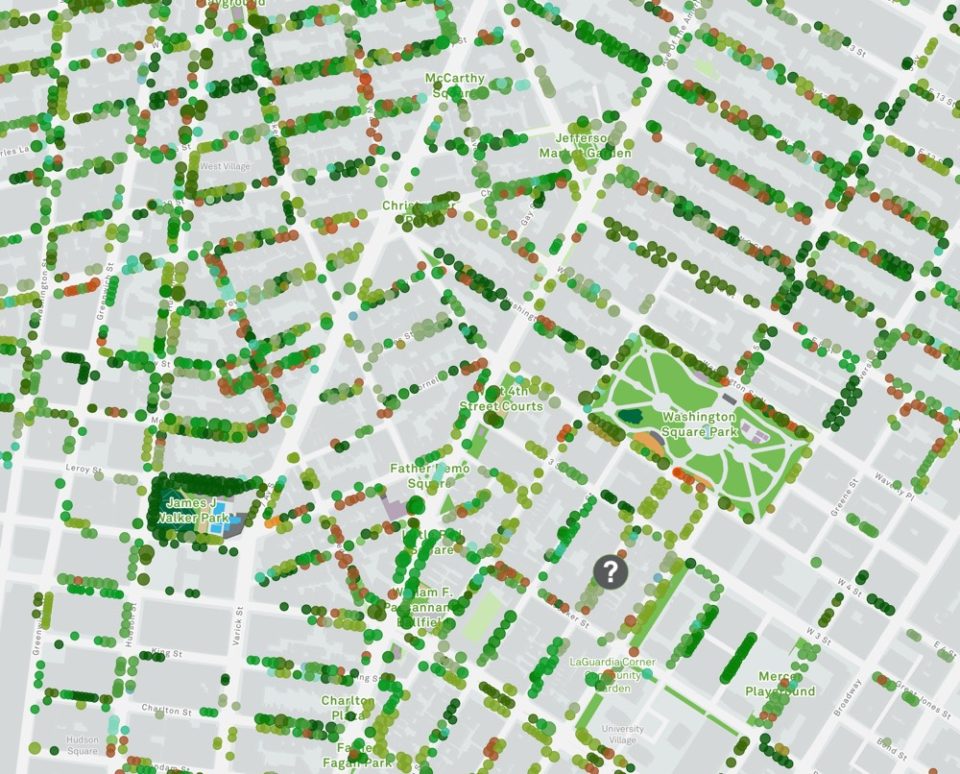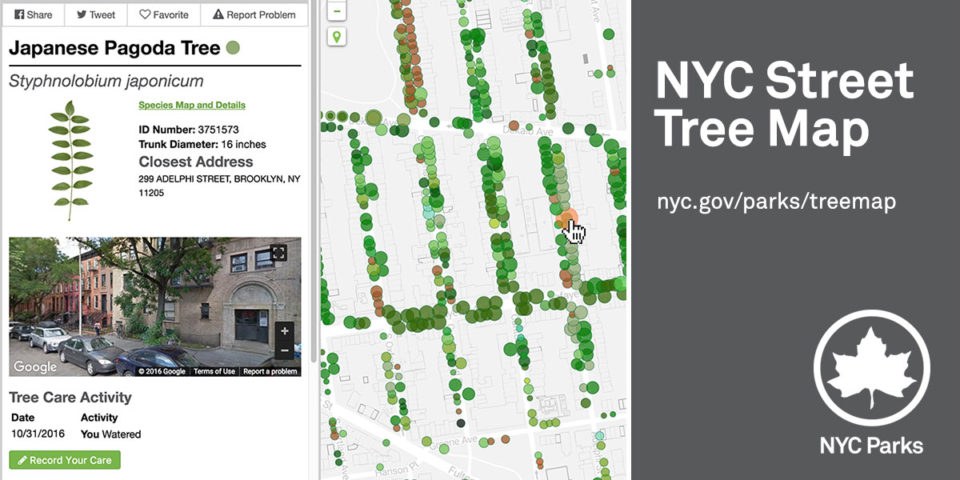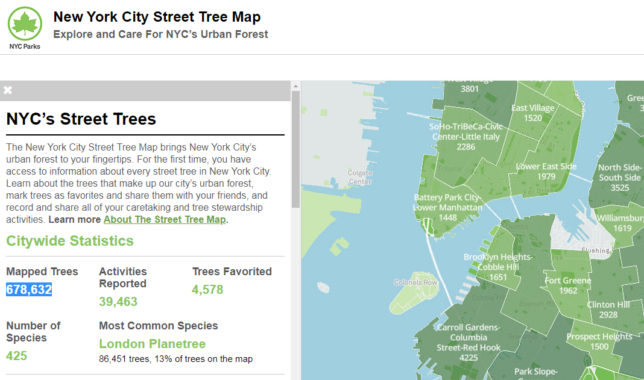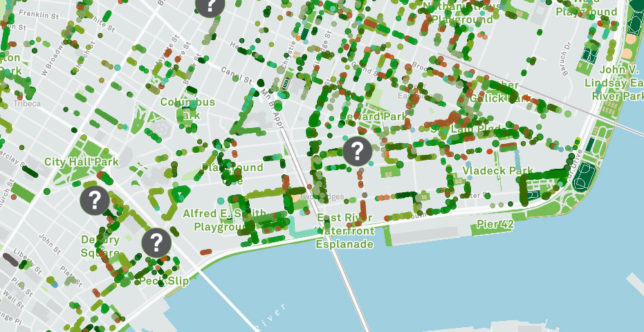The NYC Parks Department offers an amazing resource in the form of an online map that “includes every street tree in New York City” (spanning 422 species) first mapped by volunteers in 2015 and now updated daily by their forestry team. “On the map, trees are represented by circles. The size of the circle represents the diameter of the tree, and the color of the circle reflects its species. You are welcome to browse our entire inventory of trees, or to select an individual tree for more information.”
Clicking the trees reveals not just species and size but also ecological benefits provided, quantified in dollar terms, from things like capturing storm runoff and reducing air pollution. “We know that trees improve the environment and the health of a city in measurable ways. Trees can capture storm water runoff, reduce energy costs, and make the air less polluted and easier to breathe. We can calculate the benefits that each tree provides to the people of New York City based on a formula developed by the Center for Urban Forest Research. The benefits each tree provides varies based upon its species, size, and location.”
Fans can even track their favorite trees over time and add notes about tree-related activities. So far, nearly five thousand trees have been “favorited” and 20,000 activities reported. For those interested in doing even more, the Parks Department also encourages people to become involved: “It’s easy to become a tree steward! We host volunteers all year long. We can train you in basic activities such as watering trees, adding mulch and soil, and removing weeds and litter; as well as advanced activities such as installing a tree guard, expanding tree beds, and installing or removing stone or brick pavers.”
One caveat: the map only shows trees that grow on land under the jurisdiction of NYC Parks, but this includes trees planted along sidewalks or other public rights-of-way (still, it doesn’t have all trees maintained by the state or federal government or, of course, on private property). Still, with over 600,000 trees to explore, urban plant fans should have plenty to do just tracking and examining the ones that are covered!



